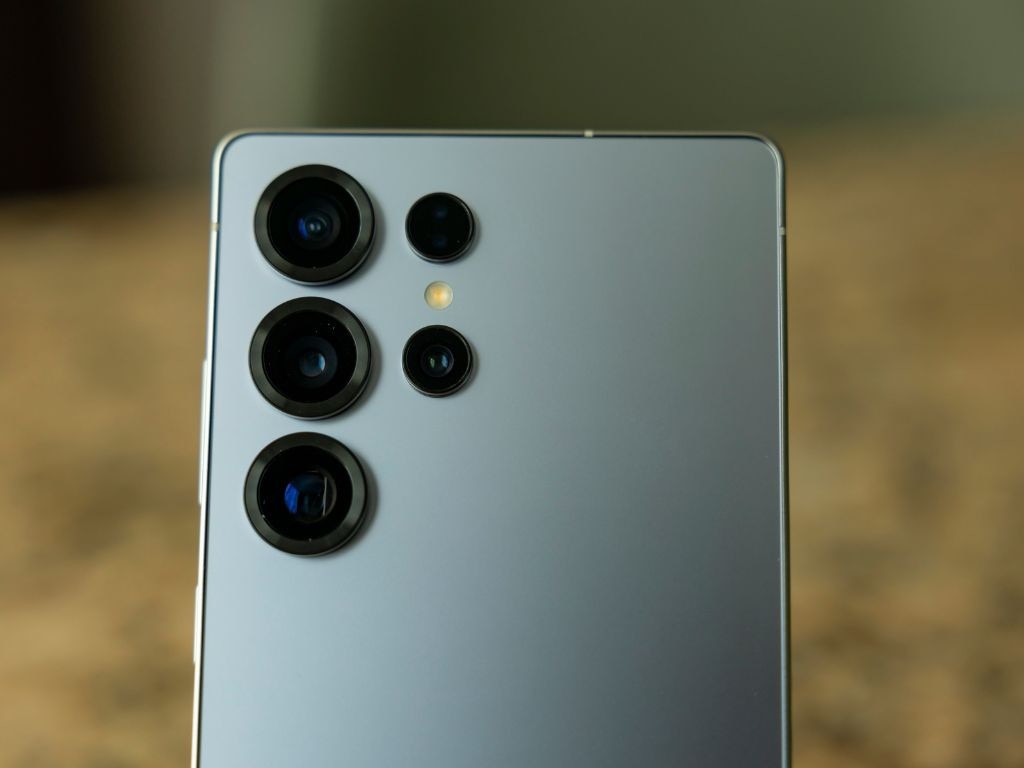
This article is more than
8 year oldSAMSUNG’S comeback smartphone is no long shot, but it certainly is long.
The Galaxy S8+ is the tallest flagship phone the company has produced, and it seems head and shoulders above its previous offerings, literally at least.
Its stretched-out body is designed to accommodate a much larger, 6.2-inch screen while still letting users hold it comfortably in one hand.
In person, it takes a while to adjust to the new phone shape, but it doesn’t feel like it will overbalance and avoids that unwieldy phablet feeling when you can’t reach your thumb all the way across the keyboard.
The unprecedented screens on the Galaxy S8+ and S8 are the hero features of Samsung’s incoming smartphones, however there are trade-offs in order to achieve them, and the phones lack some upgrades that you might expect.
NEW PHONES: Samsung’s breathtaking resurrection

But back to those hero screens. They can let you see more of the web without scrolling, let you read more emails without delving into your inbox, and make multi-tasking more achievable.
Display two apps on the screen at once — maps up top, text messages down below, for example — and you will still have plenty of room to type into a keyboard.

Samsung says the lanky screen format is also better equipped to show wide-screen films (18.5:9 vs. 21:9), and will show smaller black borders.
To produce such a large screen, however, Samsung has cut some regular features. Borders at the top and bottom of these phones have shrunk, the sides are curved, and it’s time to say goodbye to the physical home button.
Mercifully, it has been replaced with a virtual home button that appears when you unlock the phone and buzzes happily with haptic feedback every time you press it.
TECH PRESSURE: Samsung facing biggest test ever

Despite having almost no borders, the phone feels natural to use and didn’t register any accidental touches during our time with it.
You can even type one-handed without dropping it or making horrendous grammatical errors.
The other major addition to these phones is Bixby, Samsung’s artificially intelligent voice assistant designed to take on Apple’s Siri, Google Assistant, and Microsoft’s Cortana.
Samsung promises Bixby will perform more tasks, know what you’re working on, and understand even incomplete commands.
Bixby offers four main features: Voice, Vision, Reminder and Home. Read: https://t.co/yhh5buXjf1 pic.twitter.com/ynNvl2xiVh
— Samsung Electronics (@Samsung) March 29, 2017
If you tell it to open your latest photograph and send it to your Mum, for example, it might ask follow-up questions, like whether you want to send it as an MMS or over email.
Bixby has even got its own button on the side of the S8 phone. Tapping it brings up customised suggestions, like videos you might like or people you regularly phone at a certain time of day. It’s a little like a souped-up Google Now.

Holding down the Bixby button brings up a voice prompt, ready for your command.
Unfortunately, Bixby was not ready to test at its New York launch and it’s unclear when it will be ready to respond to Australian accents as Samsung still has to train it in our lingo. It holds great promise, but it’s a wait-and-see prospect currently.
COMEBACK: Samsung’s Note 7 rises from the ashes
Extra S8 features can be unlocked with new accessories. A DeX dock can connect the phone to a screen, keyboard and mouse for use as a Google Android-based computer.
A new, 4K version of Samsung’s Gear 360 camera can stream 360-degree video live via the phone, and an updated Gear VR headset with a remote control delivers virtual reality games from its screen.
A few examples of the enhancements users will get with #GalaxyS8 See: https://t.co/Uc3Poz2WXg pic.twitter.com/3Wzv8Q4YPb
— Samsung Electronics (@Samsung) March 29, 2017
The S8 and S8+ will also deliver some of the best elements of the Note 7 — dust and water resistance, an iris scanner, 64GB storage, and space for a memory card up to 256GB in size.
Naturally, the phone also boasts a faster chip, and Samsung says it will be the first smartphone to support download speeds of up to one gigabit per second (yes, 10x faster than top NBN plans on offer).

There are some missed opportunities and downsides in Samsung’s new Galaxies, however.
The front phone camera receives an upgrade, jumping from five to eight megapixels, adding autofocus and a generous f1.7 aperture, but the rear camera remains largely untouched.
It stays at 12 megapixels, and receives a software upgrade with an Anti-blur mode for fast-moving subjects.
It’s not that Samsung’s last camera wasn’t good — it’s speedy and produces decent photos in low light — but a flagship phone without a major camera upgrade might be a hard sell when up against dual-lens, DxO-ranking, Leica-touting rivals.

Another potential miss is Samsung’s decision to move the fingerprint scanner to the back of this phone, right beside its camera lens. It’s a sure-fire recipe for photo smudges and users will have to remember to wipe it regularly.
Samsung fans who don’t like curved phones are also in for troubling news. There are no flat-screen options in this line-up, so you’ll have to embrace curved Corning Gorilla Glass 5 or wait for a new Note.
Whether Samsung’s new big-screen-small-body form, the addition of Bixby, and smart accessories are enough to woo fans back to the fold will become clear after April 28.
Samsung rises again https://t.co/B2Bo3b3jK2 pic.twitter.com/jdyxwIy3Bk
— Drivefor99 (@Drive499) March 29, 2017
A bigger camera upgrade would have more doubtlessly sealed the deal.
The Galaxy S8 and S8+ are slick, thoughtfully crafted handsets that tick most boxes, however, and Bixby should make the phone more useful as it learns Aussie accents, and becomes a bigger part of these hotly anticipated phones.
Samsung Galaxy S8 and S8+ : $1199/$1349
Due: April 28
Jennifer Dudley-Nicholson travelled to New York as a guest of Samsung.